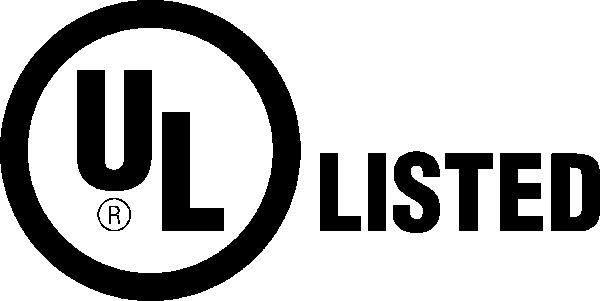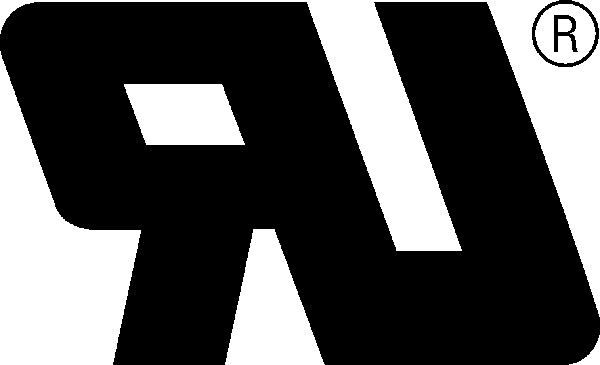Major Certification and Product Marks Explained

Product certification is essential for protecting consumers, complying with regulations, gaining market access, building trust, and ensuring safe and reliable functionality. It benefits manufacturers, consumers, and regulatory bodies by providing assurance that products are tested and approved according to industry or governmental requirements. For electronics, there are a few primary certifications that manufacturers often pursue.
FCC
By law, any electronic device that utilizes radio frequency (RF) technology or emits – either by design or as a byproduct – radio frequency energy, requires certification by the Federal Communications Commission (FCC). The primary purpose of FCC certification is to ensure that the radio frequency emitted from a product is within approved limits and won’t cause harmful interference with other electronic equipment or wireless communication services.
There are a wide range of product types that require FCC certification. In addition to electronic devices in general, Bluetooth devices, power adapters, remote control transmitters, telecommunications equipment, IT equipment, and garage doors require FCC certification. The general rule is any electronic device that can oscillate above 9 kHz must be FCC certified.
The FCC divides electronic devices into two main classes: Class A and Class B. Class A devices are those used in commercial, industrial, or businesses and that are not marketed for use in the house or by the public. Class B devices are marketed for primary usage in a residential environment and for general use by the public. In general, Class B devices are subjected to more stringent requirements.
The FCC certification mark on a product – see image – signifies:
- Compliance: The product has been evaluated and tested to ensure it meets the technical standards and requirements set by the FCC.
- Legal: The product is legally allowed to be sold, imported, or used within the U.S.
- Safety: The product is safe to use and won’t cause harmful interference with other devices.
CE
CE certification – the acronym for the French “Conformité Européenne,” which translates to European conformity – is mandatory for all non-food products sold in the European Union (EU) and the European Economic Area (EEA). While it shares some characteristics with FCC certification, CE certification covers a broader range of products, with different requirements for each product type. The requirements and regulations are laid out in a series of CE Directives.
While there are a wide variety of directives, with regulations concerning everything from toy safety to noise emissions, to hazardous substances, to fertilizers. For electronic products specifically, there are several common CE Directives:

- Electromagnetic Compatibility (EMC) Directive – This directive is similar to the FCC requirements covered in the preceding section. Essentially, the EMC directive ensures that the product does not interfere with other electronic devices and can tolerate interference from other devices.
- Radio Equipment Directive (RED) – This directive covers the requirements for products that use RF technology, ensuring they meet specific RF performance and safety requirements.
- Low Voltage Directive (LVD) – This directive requires certain design safeguards to product users from the risk of electrical shock, fire, or other potential electrical hazards.
- Restriction of Hazardous Substances (RoHS) – This directive ensures that the product does not contain certain hazardous substances, such as lead, mercury, cadmium, and certain flame retardants.
- Machinery Directive – This directive covers broad product scope that all industrial machinery including interchangeable equipment, safety components, lifting accessories, removable mechanical transmissions, and partially completed machinery.
UL
UL certification is a safety certification provided by Underwriters Laboratories Inc. (UL). It is one of the most recognized and respected certification marks globally and focuses primarily on product safety and performance. UL certification involves rigorous testing and evaluation of products to ensure that they meet specific safety standards and guidelines. The certification process includes a review of the product’s design, construction, and performance to verify that it complies with applicable safety standards and regulatory requirements.
While not required for any product, UL certification carries significant weight. The UL certification mark indicates that a product has been independently tested and found to meet the safety standards established by UL. The mark assures consumers, retailers, and regulatory authorities that the product has undergone testing by a trusted third-party organization and is considered safe to use under normal conditions.

There are several different UL Certification types, but two are more common.
- UL Listed – UL Listing means that UL has tested samples of a product and determined that the product meets the specific, defined requirements.

- UL Recognized – UL Component Recognition means that UL/UL Solutions has evaluated components or materials intended for use in a complete product or system.
Overall, having a product certified to meet these and other standards benefits all parties along the product lifecycle. For manufacturers, carrying a certification mark from any of the above organizations indicates that a product has been independently tested and found to meet applicable safety, environmental, and regulatory standards. For consumers, products that carry any of the certification marks can be trusted to be quality products that are safe to use. For regulatory bodies, certification marks establish that the product and/or manufacturer has gone through all required testing and has been found to meet any applicable requirements. These regulatory bodies help ensure safe, reliable operation that meets the intended goals for both manufacturers and consumers.
Categories:
